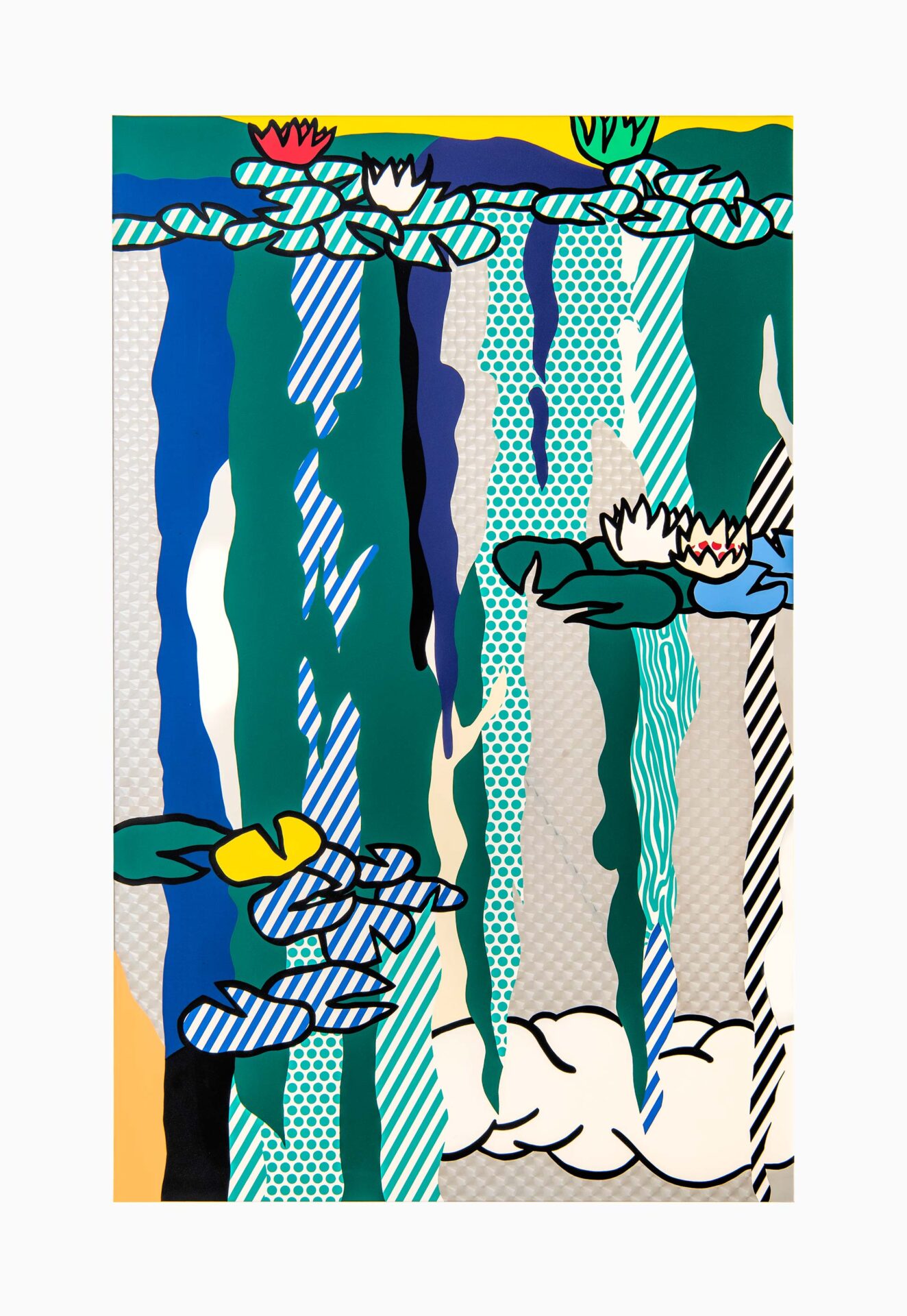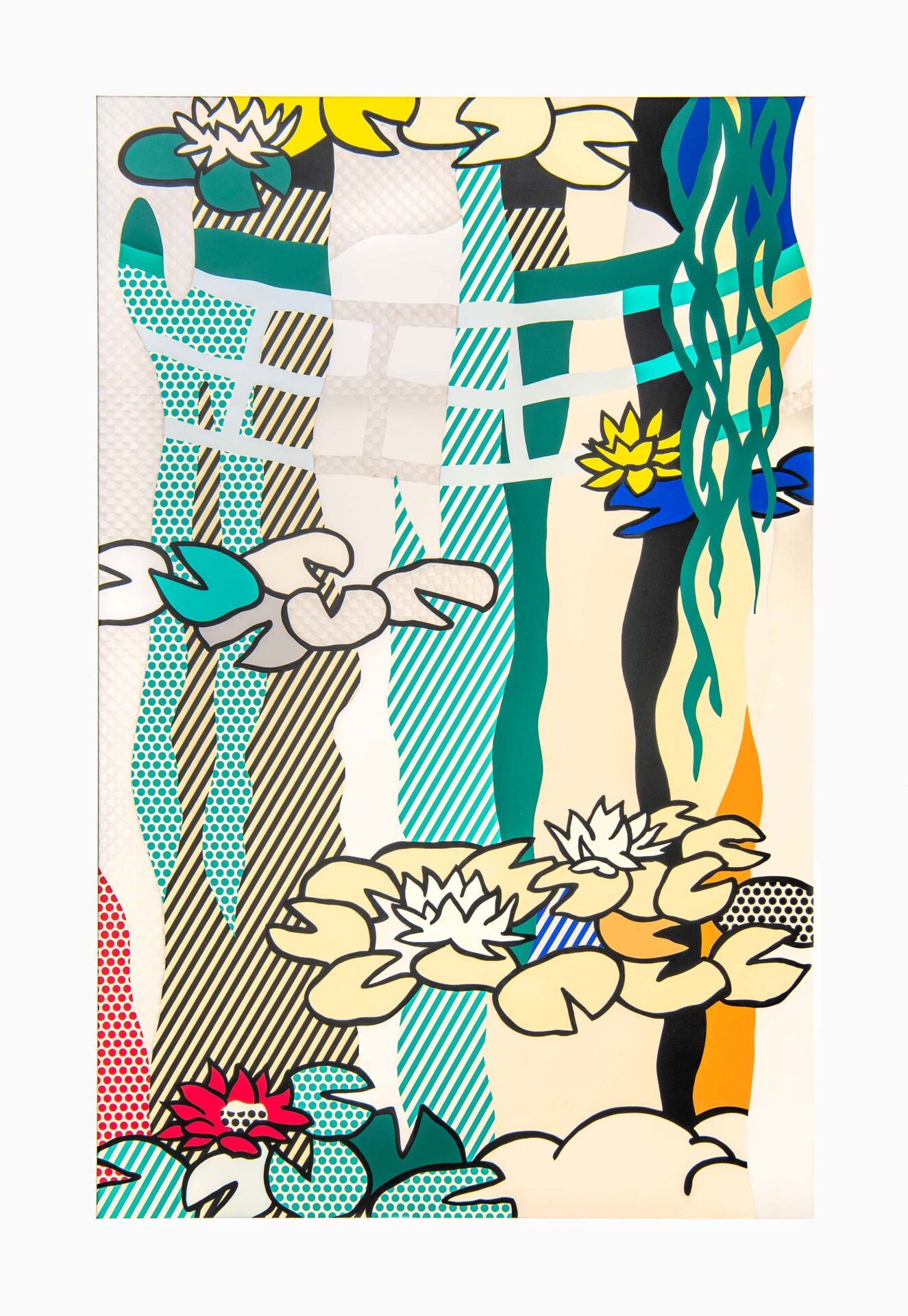Roy Lichtenstein is one of the great representative figures of Pop art in the United States, whose works have become a veritable symbol of this art movement.
Lichtenstein studied at Ohio State University. From the beginning of his training he already showed an interest in the great masters such as Rembrandt, Daumier and Picasso, and Guernica, which at that time was on deposit at MoMA in New York, was one of his favourite paintings. During the Second World War he was recruited by the American army and sent to Europe in 1945. He stayed in Paris for some time taking classes in French and general culture, until he had to return to New York in 1946 due to the serious illness of his father, who died a few weeks later.
After completing his studies in Ohio he began teaching at the same university. In 1951, when his teaching contract was not renewed, he moved with his wife, a successful decorator, to Cleveland, where he did various jobs as a furniture designer, industrial draughtsman and window dresser. At the same time, he began to exhibit at art galleries in New York.
Lichtenstein’s idea was to break with the Abstract Expressionism that dominated the New York art scene. He turned his attention to comics and advertising, from which he took iconic images such as Mickey Mouse and Popeye. These paintings attracted the attention of the gallerist Leo Castelli, who had begun working with artists such as Jasper Johns and Robert Rauschenberg. Lichtenstein’s first show at Castelli’s New York gallery was held in 1962 and it was a real success, as all the pictures were sold.
From then on, his work began to be included in collective shows at museums in the United States along with that of artists such as Rauschenberg, Warhol, Rosenquist, Johns and Oldenburg, who represented a total break with the Abstract Expressionism embodied in the New York School, giving rise to the movement known as pop art.
Lichtenstein was characterised by developing a style of his own, in which, as well as comics, he incorporated what are known as Ben-Day dots, named after the illustrator and printer Benjamin Henry Day, Jr. These were used in the past when the only colours available in printing were red, black, blue, yellow and white. By means of these dots on different backgrounds, the colours were combined in the viewer’s mind and new ones were created.
Art history was another of his sources of inspiration, especially Monet, and specifically his paintings of water lilies: one of his favourite motifs. The Hortensia Herrero collection includes two works from the series based on Monet’s water lilies.

